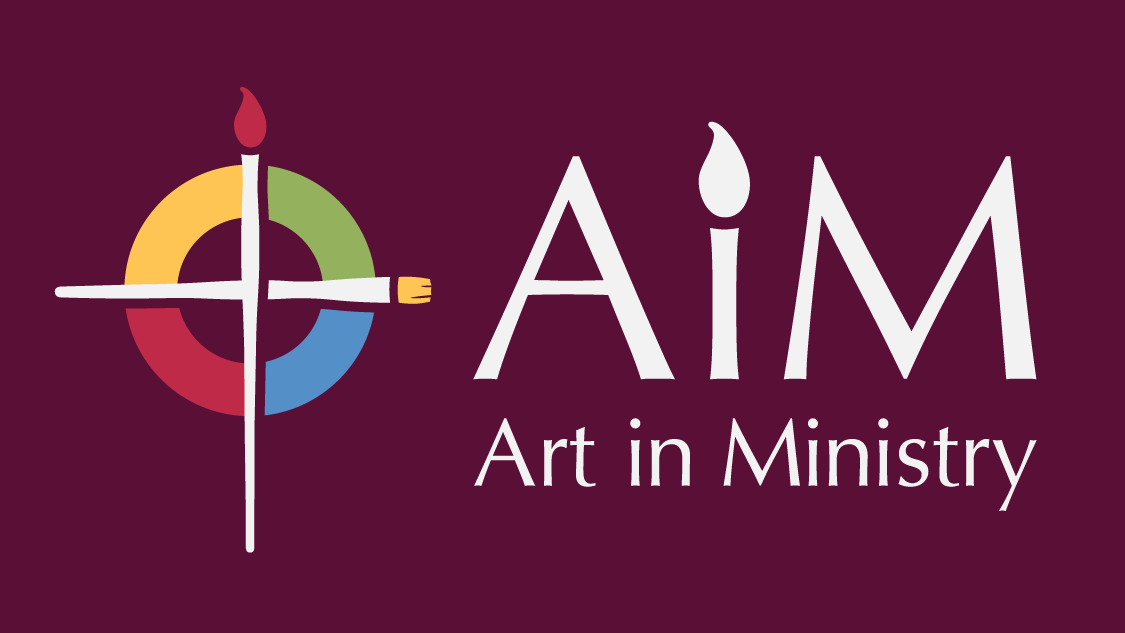Help, I’m Teaching Art!
Whether you’re a seasoned educator or a new graduate, teaching an art class for the first time can be daunting. Maybe you’ve always been interested in art but you haven’t had the chance to really hone your skills, so you’re not sure what is most important to teach. Or maybe you’re a general education grade school teacher and you’ve been thrust with the responsibility of teaching the art special on Fridays, even though “I don’t have a creative bone in my body!” Even those who have been teaching and creating art for years wonder how to make such a subjective subject into something that both the students enjoy and the administrators feel is worthwhile.
How to teach art is a big topic that can definitely be broken down further in future articles. But here is a primer to point you in the right direction, based on advice from three WELS art teachers:

Lori Ehlke
Lori Ehlke is a WELS art educator and watercolorist who has experience teaching all ages and has an impressive library of art tutorial videos on YouTube. I asked her to speak about the grade school art teacher perspective.
Michael Wiechmann
Mike Wiechmann, a mixed media artist and painter, teaches at Minnesota Valley Lutheran High School and has been building up a curriculum called WELS Creatives for other WELS art teachers to benefit from. He provides the high school educator perspective for this article.


Jason Jaspersen
Jason Jaspersen a master artist who teaches at Bethany Lutheran College. His philosophical approach to life helps to develop his students into blossoming professional artists—especially those who apprentice with him in his Art Service program—and he was gracious enough to share his thoughts on teaching college art.
First of all, why is teaching art important?
…in grade school?
…in high school?
…in college?
[Share these points with your school administrators when they ask why the school needs an art program!]
What skills would you expect students to come in knowing, and what skills are most important for them to learn?
…in grade school?
“I hope students are able to do basic drawing, know their shapes and colors, and have an idea on how to use basic lines, shapes, and colors to portray an idea.” – Lori Ehlke
Of course, the qualities and characteristics of those lines, shapes, and colors are going to look different in a Kindergarten classroom versus an eighth grade classroom. As students grow and mature, they will enter the art class with increasing levels of hand-eye coordination and prior knowledge. A high quality art class will sequentially build on the skills they learned in previous years and adapt for students at higher or lower abilities. Having a scope and sequence, or list of what content is taught when, can help to make sure that skills are being taught in age-appropriate ways and revisited in future years to reinforce them.
But what should be taught in grade school art classes?
“An art program should help students use the elements of art and principles of design when creating artwork, should help students learn to express their ideas creatively, and should teach them problem solving skills in a visual way.” – Lori Ehlke
The elements of art and principles of design are the basic building blocks of art, codified in a way that is easily practiced in isolation. The exact order and number may differ depending on the curriculum, but art teachers agree that mastering these gives the artist full control over the expression of their art.
[Some textbooks that I (Holly) found useful in knowing how to approach teaching the elements and principles of art for the different grade levels are The Art Teacher’s Survival Guide for Elementary and Middle Schools by Helen D. Hume and ART is Fundamental: Teaching the Elements and Principles of Art in Elementary School by Eileen S. Prince, but there are plenty of other textbooks that cover creating a sequential art curriculum.]
…in high school?
Besides the elements and principles of art, there are a few more skills that Mike Weichmann is hoping that incoming freshman have. He and a team of other art educators have collaborated on a list of vocabulary and concepts to develop before high school which can be found at welscreatives.com/outcomes.
Most high schools have at least art fundamentals classes in drawing, painting, and/or ceramics. Through these electives, students can develop their skills in seeing correct proportions and expressing themselves. Jason Jaspersen, who taught art at MVL before Mike Weichmann, says that in these years the important thing is mileage, or producing as much art as possible—whether that’s manga, fashion design, or whatever else happens to catch their interest—to hone their technique. If they also develop their own artistic voice in an AP art class, that’s a bonus, but college will give them plenty of time to work on that.
Knowing which techniques to teach can be daunting, so Mike Wiechman and his colleagues have several excellent lessons that are ready to go for Fundamentals of Art, Drawing, Painting, Ceramics, Graphic Design, and AP Art classes on welscreatives.com under 9th-12th Grade.
…in college?
If students don’t have the foundations down yet, such as observational drawing skills, rudimentary painting, and ceramics, they should take the time to build those first. For example, they should be able to see the difference between what is in front of them and their drawing and self-correct, as well as recreate what they see in a value reduction painting, basically creating their own paint-by-numbers. Besides that, Jason Jaspersen says, “I want somebody who’s into it.” Student interest will carry students through frustrations and difficulty (though he admits that it tends to make them “a little buggy about somebody making you do something you don’t feel like doing”). By the time they graduate, Jason Jaspersen hopes that the students have developed a unique voice, with each student solving a prompt differently according to his or her own instincts and agendas. But again, “If you don’t have your grammar down, you can’t really write the poetry,” Jason says.
From a Christian standpoint, Jason would love for students to understand how their faith and creativity can work together. As Luther has been quoted as saying, that doesn’t mean that a cobbler has to put crosses on every shoe he makes. But God made the student an artist and expects stewardship of that gift, for them to invest in it and make it better. “That’s just vocation,” Jason says, “whether you make money at it or not.” While they are not obligated to make Christian art specifically, some students do feel that calling, such as the Bethany students who created Bible story artwork for WELS Multi-language Productions and Jason’s liturgical art apprenticeship program, Art Service.
What advice would you give to a first time art teacher?
…at a grade school?
…at a high school?
…at a college?
[Save these points for future reference!]
Anything else you would like to share with new art teachers?
Lori Ehlke:
I have a YouTube channel (Ehlke Art) with over 300 videos that many WELS teachers use to help teach art.
Cassie Stephens has written a book called Art Teacherin’ 101 and also has videos with art teacher tips.
Mike Weichmann:
My calling is to work with each individual student who comes into the art room to help them find and grow their gifts. What a blessing to get a chance to do this as my job.
I specifically have made a website, welscreatives.com, to be helpful to new art teachers or teachers in general. I am slowly building out the materials. Please use this as a tool, and when you make resources consider gifting it back to our creative community. On this website, I also have coloring pages, sketchbook prompts, banners for churches to rent, and various other questions I get from people. I love the idea of not creating barriers to students having good art lessons so all of these resources are free to use by teachers or parents.
Jason Jaspersen:
It’s crazy for me to be talking about this as if I know what I’m doing. I constantly feel like I’m starting.
I’m of the belief that that God has been preparing you for the moment that you’re in. So I find the resources I need all over the place.
I think you have to find a way that you organize your thoughts outside of your head. For me, I’ve used the Getting Things Done method inside of Trello. That’s been my go-to for tracking tasks or keeping ideas for the future. And I’ve been at it long enough that I can cycle those things and re-encounter my earlier thoughts. Google Drive would do that just as well, or a sketchbook or notebook. I think the biggest thing you can do is get your thoughts out of your head and filter through all of these resources so that you ingest the information, and when it comes out it sounds like it’s unified.
Being an art teacher can be very lonely. I experienced that on the high school level, because, you know, you’re the only one. I imagine at the grade school level too. If you’re the art teacher, well, what do people talk about at the lunch table? Probably not about museums or stretching canvas. At the college level, you probably have some peers, but not always. It depends on the scale of the program and the college. But I’ve heard artists described as border stalkers. Always looking at the boundaries, dwelling at the frontier of what if, maybe, and possibility. And a lot of people like to just hunker down in certainty. Most of the world likes that. Could be lonely out there at the frontier.
Maybe the last thing I would want to say is that it’s easy to feel insufficient, to feel a little ashamed that you’re not Super Prof. That happens to me. And somehow, I’ve recently shed that feeling this year; I’ve kind of dropped it and realized, God put me here. On purpose. Because ultimately, it’s in God’s plan. And also, from a surface standpoint, I’m hired. They chose me. And so I feel I feel more confident this year to assert that the things that are peculiar about me aren’t the things I should be hiding. They’re actually the reason I’m here. And that’s true for for other people, too. It’s hard to accept sometimes that you’re different on purpose. And it’s just right. Just right.


